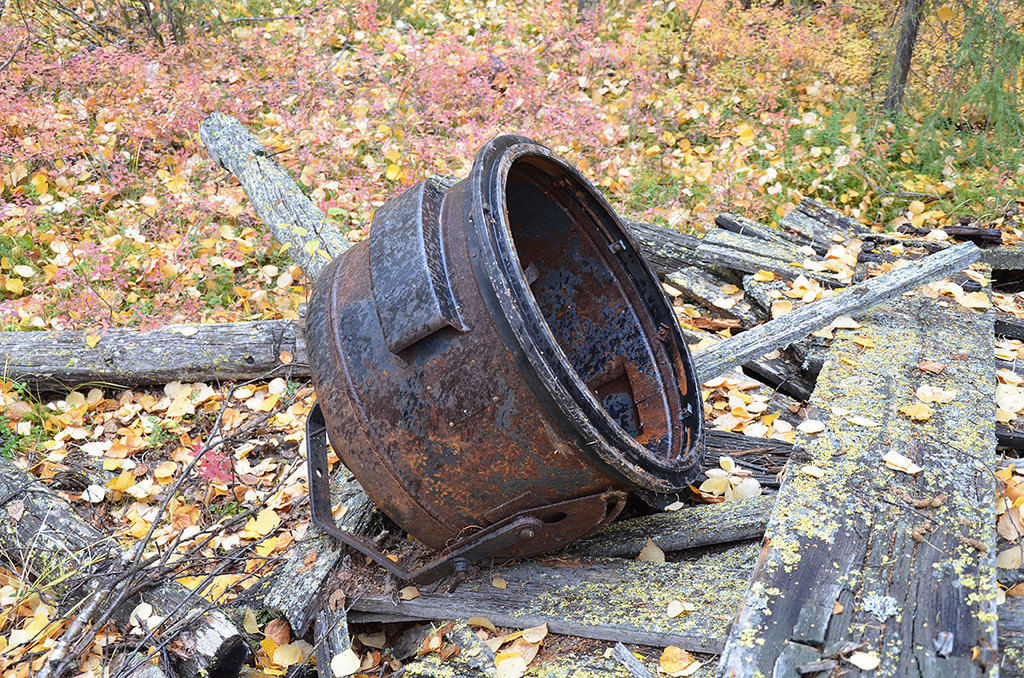Watchtower (Klyuch labour camp)
Watchtowers were mostly located on each corner of the labour camp. In larger camps, with a perimeter bigger than the usual 150 metres x 150 metres, other watchtowers could have been placed in the middle of each side of the camp.
Watch Jan Plovajko’s whole story
Watchtowers were mostly made of wood. In the vast majority of camps that we examined, these towers had fallen apart or collapsed. The well preserved tower shown here is something of an exception. It even has a preserved piece of rail on which guards beat various messages or sounded alarms.
The watchtower overlooked the entire territory of the camp (which was not overgrown with trees as it is now). Above all, it had a view of the so-called forbidden zone between individual towers. There were three fences here – besides the main high fence of barbed wire, there was also a lower fence (made of wire or a wooden enclosure) at a distance of 5.5 metres from the main fence as well as an outer fence of the same type at a distance of 15 metres from the main enclosure. Anyone who set foot in the forbidden zone between these fences could be shot by the guards for attempting to escape.
Sometimes, however, the guards fired without the prisoner setting foot in this zone. They also used weaponry during outdoor work; sometimes they even shot an innocent prisoner so that they could fake an escape attempt with the guards receiving a reward for “foiling” it. “People in the camps died of vitamin deficiency, exhausting work, and homesickness,” recalls Alexander Snovsky. “Random shootings also claimed their victims. You never knew what would cross an idiot guard’s mind that would give him cause to shoot.”
